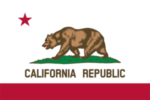Understanding Insurance Requirements for California Drivers
Having auto insurance is not just a suggestion in California—it’s the law. The state requires all drivers to carry a minimum amount of liability insurance to cover damages or injuries in the event of a collision. Whether you’re a new driver or just reviewing your policy, it’s important to understand the specific insurance requirements that apply to you. Here’s a breakdown of what every driver in California should know about maintaining proper auto insurance coverage.
1. Minimum Liability Insurance Coverage
In California, drivers must carry liability insurance to legally operate a vehicle. Liability insurance helps cover costs related to injuries or property damage that you may cause in an accident. The minimum required coverage is:
- $15,000 for injury or death to one person.
- $30,000 for injury or death to more than one person.
- $5,000 for property damage .
These minimums are designed to protect other drivers, passengers, and property owners in the event of a crash. However, these amounts may not be enough to cover all damages, so many drivers opt for higher coverage limits.
2. Proof of Insurance
Drivers must always carry proof of insurance while driving. You may be asked to show it:
- During a traffic stop: If you are pulled over, the officer may request proof of insurance.
- After an accident: If you’re involved in a collision, you must provide your insurance details to the other party.
- Vehicle registration or renewal: The California Department of Motor Vehicles (DMV) requires proof of insurance to register or renew a vehicle’s registration.
Most insurance companies now offer digital insurance cards that you can store on your phone, making it easy to provide proof when needed. Failure to provide proof of insurance can result in fines or the suspension of your driver’s license .
3. Optional Coverage
While liability insurance is the only coverage required by law, there are other optional types of insurance that many drivers consider:
- Collision coverage: This helps pay for repairs to your own car after an accident, regardless of fault.
- Comprehensive coverage: This covers damage to your car that isn’t caused by a collision, such as theft, vandalism, or natural disasters.
- Uninsured/Underinsured motorist coverage: This protects you if you’re involved in an accident with a driver who doesn’t have enough insurance to cover the damages.
These optional coverages provide additional protection and peace of mind, especially in situations where the minimum liability coverage may not be enough.
4. Consequences of Driving Without Insurance
Failing to maintain the minimum required insurance can lead to serious penalties, including:
- Fines: You may be fined if caught driving without insurance.
- Vehicle impoundment: Your vehicle may be impounded, and you’ll need to pay fees to retrieve it.
- License suspension: Your driver’s license may be suspended until you can provide proof of insurance.
Additionally, if you’re involved in an accident without insurance, you may be personally responsible for paying the other party’s damages out of pocket, which can lead to financial hardship.
5. Alternatives to Insurance
California offers alternatives to traditional insurance for drivers who may not be able to purchase a standard policy:
- Self-insurance certificate: This option is available for individuals or businesses who can prove they have the financial ability to pay for damages or injuries in the event of a collision.
- Surety bond: You may post a bond for $35,000 with the DMV as an alternative to carrying insurance. This bond acts as a guarantee that you can cover damages if you’re at fault in an accident .
These alternatives are typically used by individuals with unique financial circumstances but are not common for most drivers.






Recent Comments